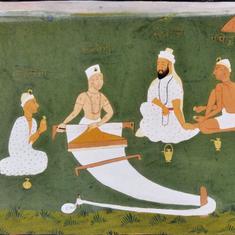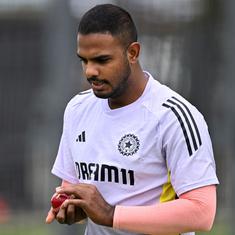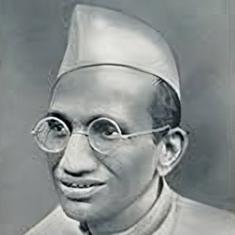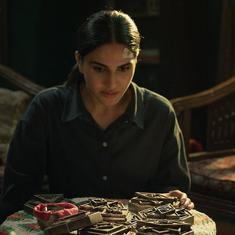Who is your favourite male player?
Mithali Raj: Would you ask a male cricketer that?
What do you think when you hear someone talk about you as one of the greatest female athletes of all time?
Serena Williams: I prefer the word “one of the greatest athletes of all time”
You don’t talk about retirement, about raising a family, about motherhood...
Sania Mirza: You sound disappointed that I’m not choosing motherhood over being number one in the world at this point of time.
Why don’t you smile more often?
Simone Biles: Smiling doesn’t win you gold medals.
India capt,Mithali Raj when asked who her favourite men's cricketer is:"Do u ask a male cricketer who their favourite female cricketer is?🙌🏽 pic.twitter.com/MFInSCrrq0
— Sipokazi Sokanyile (@Syfokazi) June 22, 2017
These retorts or “burns” as they are called, by female athletes on being asked inappropriate questions, are unequivocally cheered across social media. “Sania Mirza schools Rajdeep Sardesai”, “Serena Williams shuts down trolls” or “Simone Biles’ perfect clapback” have become commonplace viral headlines.
But behind the applause and the retweets, there is a far larger problem in celebrating these responses. Even in this day and age, a female athlete at the top of her sport is asked questions that have very little to do with her own game. A substantial chunk of narrative in coverage of female sportswomen is still based on her physique, her outfit, her traditional gender roles and worst of all, as a counterpoint to the men’s game.
Women’s sport is always held in comparison to men’s, but more so when it comes to cricket, especially in India. While talking to a former Indian international cricketer, she kept emphasising that every time she refers to cricket, she means the women’s game because reporters often mix them up. Another cricketer had spoken about how boys in a club team refused to play her team because they didn’t want to play with a girl.
What does this tell you?
In our society – be it any walk of life or even a walk down your neighbourhood – there are certain questions that only women are asked: “What are you wearing?” “When are you getting married/becoming a mother?” “Where is you male chaperone?”
These are the kind of questions that make you want to retort the way Raj did: “Would you ask a man that?”
And it’s not just the laywomen who have had to face these age old queries; Hillary Clinton has argued that, Blake Lively has yelled that out to a reporter as well, showing that it is not only sportswomen but all women who have to put up with a certain sexist line of inquiry.
A few years back, the #CoverTheAthlete campaign did an excellent job of highlighting everything that is wrong with media coverage of female athletes. The video above, made using questions that were actually asked to female athletes, shows you the blatant gender discrimination by the media.
“Sexist commentary, inappropriate interview questions, and articles commenting on physical appearance not only trivializes a woman’s accomplishments, but also sends a message that a woman’s value is based on her looks, not her ability. And it’s much too commonplace,” reads the description on the website along with instances of questions asked – ranging from body hair to breast reduction surgery – that should enrage any self-aware person, irrespective of gender.
Forget the major factors such as gender wage gap and difference in live coverage, the disparity in just the treatment of male and female athletes pervades every sphere of the mass media. In most cases, an advertisement featuring a male player will show him intense, focused, staring into the camera, but a female athlete will be shown either smiling or sexualised in some way. Or if a female athlete is shown at all, the focus in not always on her, as we saw in the Da Da Ding ad for Nike. Sometimes even during tournaments, women will be given a more feminine kit.
Remember during the 2010 Women’s Boxing World Championships, the International Amateur Boxing Association, gave the boxers skirts to wear? Or the Women’s Tennis Association’s “Strong is Beautiful” campaign, which – even though it featured the top players trying to send a positive message – implied that strong and beautiful are generally considered mutually exclusive.
It is these gestures – well meaning or unconscious – that reiterate the double standard of gender-based sports coverage. And these often come from the administration or corporates. But for better or worse, mass media’s function is to hold a mirror to society – the watchdog, the gatekeeper.
- If these representatives of the masses discriminate and treat women’s sports coverage superficially, can we expect the consumers to think any different?
- If a reporter during a Grand Slam asks you to twirl so people can see your outfit better instead of asking about your game, can we expect the viewers to not be interested?
- If the country’s most successful female Olympian is described as leggy and lithe in match reports, can the readers think any different?
- If a reporter at a press interaction at an event as big as a World Cup thinks it’s okay to ask an international captain about her favourite male player instead of her own game or just favourite player, what message does that send to the the hundreds of young women watching?
Thanks to social media, we saw a number of fellow international cricketers instantly share and support Mithali Raj’s response – a small victory for the crusaders of gender balanced sports coverage. But the real win will be when women, athletes or otherwise, don’t have to bother with these questions at all. They can choose to wear and look how they want, as long as they are putting in the work and not be compared to or treated differently to the men in their field.
You may call me a dreamer, but I hope I’m not the only one.










